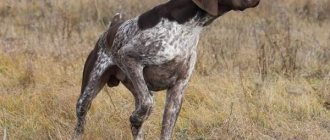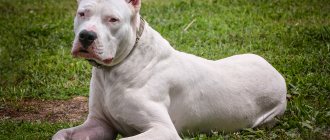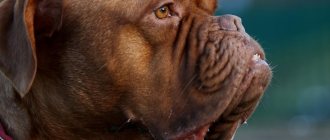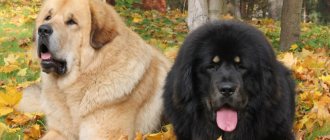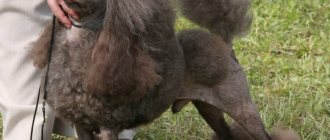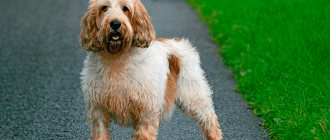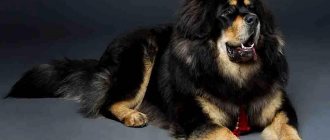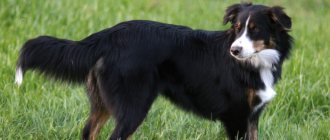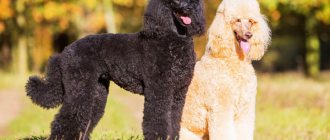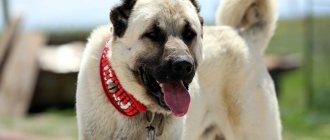The German Shorthaired Pointer, also known as the German Shorthaired Pointer, is a breed of hunting pointing dog. At the beginning of the 19th century, the Spanish ancestors of these dogs came to Germany, where, after crossing with local breeds, the shorthaired pointer was obtained. It is worth keeping in mind that this did not happen by chance; strict selection was carried out in order to breed a dog suitable for the needs of the hunter.
An innate ability to hunt game, an excellent sense of smell, and the ability to swim are qualities for which the shorthaired pointer is valued all over the world. He knows how to pick up a trail and is an excellent gunner. The word “pointer” itself means “suggestive”. A very sociable pet, it is difficult to tolerate loneliness, and tends to bark at strangers and loud noises. The purity of the breed is closely monitored: only a dog that meets the strict parameters specified in the canine standard is considered a German Shorthaired Pointer.
REFERENCE. The name "Kurzhaar" comes from the German words: kurz - "short" and haar - "wool", which indicates the smooth coat of the breed.
Description and features
The shorthaired pointer dog is one of the oldest pointing dogs. It appeared in Germany in the second half of the 19th century. At that time, greyhounds, which were intended for killing and baiting animals, were in great demand in Europe. Therefore, the charming cop did not gain enormous popularity right away.
However, hunters of the time noted that he had first-class instincts and endurance. The main task of such a dog was and is to hunt birds. He “worked” in tandem with his owner. To get as many birds as possible, the animal found the location of the flock by smell, lay down in a shelter and waited for the owner. He, in turn, silently crept up to the birds and carefully threw a net over them.
Interesting fact! The expression “cops” first appeared in Germany. It literally means “to lie down in front of the hunted object.”
Thanks to its unique working talent, or rather the ability to silently sneak up on birds, this dog was nicknamed the “German bird dog.” His behavior was greatly influenced by the proliferation of firearms. This became the basis for expanding the working potential of the animal.
Thus, the use of a gun by a hunter led to a new style of hunting with the German pointer. The dog began to literally chase game at the armed man, and he shot it. Previously, she hid in a shelter and determined the best moment to exit.
The shorthaired pointer is the most famous dog among hunting breeds
Hunting with shorthaired pointer is productive and interesting. The dog is able to get game not only on land, but also on water. Can dive into the river for a pike or turtle. Then it will crawl ashore and shake off excess moisture. Designed for hunting birds, rabbits, rodents, wild boars, foxes and even deer.
The dog's good-natured disposition and agility made him a good companion. He is infinitely devoted to his owner, respects and loves his household. Well, he loves children. Will never hurt a child. If he hurts the shorthaired pointer, he will leave silently, but will not snap back.
This breed is full of vitality and enthusiasm! He will never get tired of a fun game; on the contrary, once he gets the taste, he will cheerfully invite everyone to join. Strongly needs sports activities. He will be happy to keep his owner company while jogging or swimming. Loves the game “fetch the stick”.
As a guard, the Shorthaired Pointer is ineffective. He is overwhelmed with kindness and love for people, he is devoid of observation. However, it may perceive small animals trying to enter its territory as potential prey. Friendly towards strangers. Often makes noise for any reason. Noisy and fussy.
History of the origin of the German Shorthaired Pointer dog breed
Hunting dogs were very popular in Europe. Researchers believe that the ancestors of shorthaired pointers were brought to Germany from the Mediterranean. Spanish Shorthair Braccos began to be crossed with local hunting breeds. The result was the Württemberg Shorthaired Pointer, popular among German hunters. She is the direct ancestor of the shorthaired pointer.
The breeders sought to obtain an ideal pointer for bird hunting, hardy, fast, and with good scent. For this purpose, pointers, hounds, foxhounds, and Dalmatians participated in the breeding of the shorthaired pointer. Already in the middle of the 19th century, a new breed was introduced. Due to the characteristics of its coat, it was called shorthaired pointer. At the same time, related breeds were bred: Drathaar, Langhaar.
The first standard was created in 1879. But only at the beginning of the 20th century the breed spread throughout the world, captivating dog breeders with its attractive appearance and working qualities. In the 1930s, Shorthaired Pointers came to the United States, where they became known as German Shorthaired Pointers.
During World War II, the dog population was greatly reduced. But already in the 60s of the 20th century, shorthaired pointers became the most popular breed among hunters all over the world. Even now they occupy 16th place in the ranking. Although modern Shorthaired Pointers primarily serve as companions, they sometimes serve in the police and rescue services.
Breed standard
The shorthaired pointer breed is medium in weight and size. Its adult representative weighs from 21 to 28 kg. The weight of the bitches is slightly less. It grows up to 58-63 cm. The dog has a rectangular, slightly elongated body. Like all cops, her stomach is tucked, and her sternum is voluminous and protruding. The back is flat, the lumbar region is pronounced, its center is convex. The animal has strong, stable legs, with well-developed thigh muscles.
His fingers are pressed tightly together, his claws are sharp and fast-growing. Shorthaired Pointer puppies are born with long, thin tails. But it is customary for them to crop this part of the body in the first months of life. It is believed that a pointing dog with a docked tail is more successful in hunting. They have very dense skin that does not fold on the body and does not form wrinkles.
The dog has a medium-sized head with an elongated muzzle. The forehead is convex. He also has a very powerful jaw, which allows him to grab game and hold it firmly. A full row of snow-white teeth. The hooked nose at the edge of the muzzle is pigmented in the main shade of the coat. Movable wide nostrils. Dense eyelids, wide eye sockets.
Most often, shorthaired pointers are born with a light brown iris. According to the standard, their pupils cannot be white or yellow. The ears of these dogs are large and long. Set high on the crown, hanging down. Regarding the dog's fur. It is rough to the touch and short in length. Reminds me of a rough brush. The shorter coat is in the head area.
Appearance of dogs of the German Shorthaired Pointer breed
The shorthaired pointer is a large dog. The height at the withers of some males reaches 66 cm, but the physique is elegant and even graceful. Despite the fact that the body is muscular and athletic, the dog looks light. And the weight of a shorthaired pointer rarely exceeds 32 kg, and females weigh 20-27 kg. Therefore, it is classified as a medium rather than large breed.
The standard provides for the following features of the Shorthaired Pointer:
- elegant harmonious physique;
- pronounced muscles;
- short smooth coat;
- long muscular legs;
- dry head with long floppy ears;
- stately posture;
- easy free movements.
The dog's working qualities, balanced temperament, and lack of aggression are most valued. Individuals that do not pass the tests are not allowed for breeding.
Photos complement the description of the appearance:
Head
The head is wedge-shaped, dry, and proportional in size to the body. The skull is wide, rounded, the forehead is convex. The brow ridges are clearly visible, and the stop and occipital protuberance are almost invisible. The muzzle is wide, elongated, gradually tapering towards the nose. It is deep, which makes it easier for the dog to carry game.
The bridge of the nose has a small hump. The lobe is wide, black. But it can be dyed to match the color of the wool. In individuals with a predominance of white color, incomplete pigmentation is possible. The lips are dry, dark, and tightly fitting. A fold is formed at the corners of the mouth. Jaws with a scissor bite, teeth tightly closed, large.
The eyes are medium in size, set slightly askew, brown in color. The look is smart, attentive. The ears are flat, hanging, set high and wide. The size is medium, the tips are rounded, reaching the corners of the mouth. When at rest, the ears are close to the head.
Body type
The physique is harmonious, muscular, the bones are strong, but not heavy. The length of the body is slightly greater than the height at the withers. The neck is long and beautifully curved. The scruff is well defined, there is no dewlap at the throat. The chest is deep, the ribs are arched, the stomach is tucked.
The back is straight and muscular. The loin is short, the croup is wide. The tail is thick at the base and continues the line of the back. Tapers towards the tip, hangs down when calm, reaching the hock joint. It should not rise above the back or bend too much. If the dog is used for hunting, it is recommended to dock the tail at half its length, but in some countries this procedure is prohibited.
Limbs
The limbs are parallel, smooth, muscular. The shoulder blades fit tightly to the body, the elbows are located at the level of the sternum, deep under the body. The joints on the hind limbs are clearly defined. The hips are wide, the legs are long.
The paws are arched, with large claws. The fingers are gathered into a ball, the pads are hard. The movements are sweeping, light, and a proud posture is maintained.
Coat and color
The dog's skin fits tightly and does not form folds. The coat is short - up to 2 cm long, on the head - up to 1 cm. The hairs are hard, reminiscent of bristles, on the head - softer. The coat evenly covers the entire body, lies tightly, smooth and shiny. This is the main difference from its related breed, the Drathaar.
The standard allows several colors. They are usually mottled in color with a black, gray or chocolate tint. The brown shorthaired pointer can be solid, gray, white or gray spotted. With a speckled color, the head is chocolate, large dark spots on the body. Solid brown or piebald colors are acceptable.
The same color options with black. A pure white shorthaired pointer is not recognized as a purebred shorthaired pointer; it must have chocolate or black spots and spots. German breeders prefer darker browns, contrasting colors, as such dogs are more noticeable when hunting.
Photos of shorthaired pointers of different colors:
Disqualifying faults
The standard for this breed has been revised many times; the version from 2001 is currently in effect. He describes in detail what a shorthaired pointer should look like. Any deviations from the standard are unacceptable. Dogs with the following defects and defects in appearance are not allowed for exhibitions and breeding:
- malocclusion;
- short or pointed muzzle;
- incomplete dental formula;
- fleshy lips;
- light eyes;
- short or narrowly set ears;
- pronounced stop;
- wavy coat;
- pendant around the neck;
- hunched back;
- incorrect placement of limbs;
- curving tail;
- ambling or clumsiness in movements.
Kinds
The shorthaired pointer is a hunting breed that has been standardized as a separate breed. It is not divided into subtypes. However, breeders took care to produce several colors of such dogs, they are:
— Black Shorthaired Pointer
— Brown shorthaired pointer
— Spotted (brown and white) shorthaired pointer
The last variety is considered the most popular.
Interesting ! Breeders of this breed claim that if yellow markings are visible on the body of an individual, it will become excellent at finding game based on its bloody trail.
Mixed shorthaired pointer
As a rule, among professional breeders, a cross-breed shorthaired pointer, even when crossed with another pointer, is equal to a mongrel, that is, a mongrel dog. There is an opinion that only a purebred shorthaired pointer can be an excellent hunter, but many do not pay attention to such stereotypes.
By properly training a mixed breed, you can get an excellent pointing dog. And when crossed with another hunting breed, the puppy has a chance to receive the best genes from both parents and become a more multifunctional dog .
The most famous shorthaired pointer mix is a sled dog specially bred in Norway in the late 1980s. The Norwegian sporting mixed breed (this is how the breed got its name) is a mixture of a German shorthaired pointer, a Greyhound and a Pointer. Puppies grown from such matings are hardy runners.
Character
For many centuries, the German Shorthaired Pointer hunted terrestrial and aquatic inhabitants. He always tried to win the favor and love of his owner, living side by side with him. This practice could not but affect the character of the animal. Yes, his main passion will always be hunting, but at heart he is an affectionate and sensitive pet.
The modern representative of the breed is very friendly. People are friends and toys for him. He is ready to play with anyone who smiles at him. Having grown up in a favorable atmosphere, Shorthaired Pointers are filled with love. They are ready to share it with any person, even sad or angry.
These are quite smart dogs, accustomed to trusting their owners. They understand when they joke with them and happily respond in kind. They can imitate any emotion, even aggression. Just don’t be afraid of cute shorthaired pointers, they are absolutely harmless.
Shorthaired Pointers have a very active and restless character.
Such pets are good nannies. They treat children patiently and responsibly, love to play with them, and allow any pranks with them. But, we do not recommend that parents of small children leave them alone with a representative of the breed, as they may accidentally hurt him. In this case, the dog will silently leave the offending child and may be afraid to be alone with him in the future.
This is a very loyal dog that will not serve a second owner. If she becomes attached to a person and begins to trust him, she will never leave him. Constantly demands attention. Vulnerable and sensitive. Shorthaired Pointer females are more gentle than males. They can lie next to their household members for hours, lick them and look reverently into their eyes.
This breed does not tolerate loneliness very well. Regular contact with the owners is vital for him. It is important that they pet and talk to the pet every day. Only in this case will he feel happy.
It is extremely important for him to systematically be in nature, ideally to hunt. When a dog sees a collar or a gun, he becomes truly delighted, as he understands that these objects are associated with hunting. At this moment, he allows the owner to put on a collar with a leash so that he can take him to the forest as quickly as possible.
Advice ! If the shorthaired pointer rarely exercises or hunts, it may become skittish or joyless. Therefore, it is recommended to go with him to the stadium or to the forest as often as possible.
It should be noted that males of this breed often strive to gain the upper hand over their owner and refuse to obey his commands. That is why they should be raised correctly, and it should start early.
Such a pet requires a strong-willed owner with enormous fortitude. He will agree to follow him and will respect him. The owner of this dog also needs to be aware of his hyperenergy. He will run around the yard, play, track down insects and animals, in a word, spend his time actively.
He loves to train. Naturally intelligent, the shorthaired pointer is an excellent student. He always tries to please his owner with good behavior and obedience, so difficulties in his training arise extremely rarely.
Can a representative of the breed in question get along with other pets? It definitely can, but it should be borne in mind that he is, first of all, a hunting hunter, so he may perceive small animals, for example, rats and rabbits, as his prey.
Comparison with other hunting dogs
The German shorthaired pointer stands out among hunting dogs for its short hair, as well as a number of other characteristics.
Drathaar
Kurzhaar and drathaar are similar. They are both pointers, belong to the same continental group, and are similar in size and body weight. The hard and long coat with a double undercoat makes the Drahthaar adapted to harsh weather conditions, less susceptible to getting wet and freezing.
Kurtshaar is the progenitor of the drathaar. Kurts, bred in the early 19th century, became a breed that participated in the breeding of drats. The popularity of the latter is growing today, and both breeds have almost supplanted their long-haired relative, the Langhaar.
Both dogs are relatively obedient (but not as obedient as, for example, shepherds) . They are not very adapted to urban conditions; they need trips to the forest or at least jogging in the park. However, it is almost impossible to wean them from hunting pigeons and cats. A distinctive feature of the Drathaar is its innate low level of aggression, however, it is difficult to call the Kurt aggressive.
Care and maintenance
It is better to live with a Shorthaired Pointer in a private house rather than in an apartment. Why? Firstly, in the yard he will find many interesting activities for himself, for example, digging in the ground or chasing cats. Secondly, on the street the dog will have round-the-clock access to fresh air. And, finally, thirdly, he will be much more comfortable there, because he is an energetic hunter.
If you still plan to live with him in an apartment, you must arrange his sleeping place. The dog will need a bedding on the floor or a large bed. Allowing her to sleep with people on the bed is not recommended. In the second case, you will have to walk the animal at least 3-4 times a day. The minimum duration of the walk is 1 hour.
Shorthaired Pointers are good-natured towards children
We advise you to always keep your pet on a leash so that he does not run off into the distance, smelling game, for example, a squirrel. When you go for a walk with your pet, do not forget to give him the opportunity to actively relax. A great option is to go jogging together. You can also throw bottles or sticks at him.
Such an animal needs to be bathed every month. Fortunately, he loves this procedure very much. It is important to ensure that soapy water does not get into his eyes. After the procedure, be sure to clean your pet’s ears and sinuses of wax. If there are yellow marks on his teeth, you can be sure that this is plaque. A toothbrush will help get rid of it.
Nutrition
An active and energetic shorthaired pointer should be fed twice a day. Three meals a day are welcome, but in this case the portions should be reduced. Such a dog should consume about 600-700 grams of food per day. It is better to give puppies natural foods, this will allow them to fully develop. Their diet should consist of:
- Chicken by-products.
- Fresh meat.
- Dairy products.
- Vegetables and fruits.
But giving sweets and smoked foods to cop kids is contraindicated. Poor nutrition at this age can cause food allergies in the future. It is better to give a mature dog dry food, about 300 grams at a time.
Between meals, he can be given a “snack”. Hunting dogs love to chew dried pig's ear. You can purchase such a product at any pet store. Be sure to change the water in your dog's bowl daily. Make sure he always has access to it.
Lifespan and reproduction
German cops live for about 13 years, of course, with good care. If you don’t vaccinate them and feed them poorly, they can serve no more than 10 years. Remember that the lifespan of a pet dog depends entirely on how well it is cared for.
A Shorthaired Pointer bitch is introduced to an adult male on the 3rd day from the start of her heat. During this period, their sexual instinct becomes more acute, so the chance of conceiving offspring is higher. If the female is pregnant, she should be given more protein (milk, cheese, cottage cheese).
By the way, her round tummy testifies to this position. He becomes like this within a week after mating. On average, pregnancy in Shorthaired Pointers lasts 65-70 days. There can be from 1 to 8 puppies in a litter, more often 4 or 6 are born. The sex of the dogs can be accurately determined after a couple of weeks.
Price
This is an elite breed of dogs from the expensive segment. Fortunately, there are her nurseries in many Russian cities, including Moscow and St. Petersburg. The cost of cops varies. It depends on their class. Individuals of the lower class are sold from 15 to 25 thousand rubles.
Dogs with an excellent pedigree are much more expensive, on average 50 thousand rubles. The price of a shorthaired pointer from hand is from 5 to 12 thousand rubles. Be sure to inspect the puppy before purchasing! He must be strong, inquisitive and agile.
In the photo there is a shorthaired pointer puppy
Education and training
There is no need to train a German cop to hunt foxes, birds or rabbits. He is a born hunter with corresponding instincts. But you will definitely have to train him to work in tandem with you. In order for a dog to become an efficient breadwinner, you must first teach him to trust. He will be most successful if he becomes the student of one person, preferably a professional hunter.
Initially, the dog should be taught the classical rules of behavior. She must know her own name well and always respond to it. So repeat it when she is around. The second important point - do not allow her to jump on people in a fit of joy, and it doesn’t matter who exactly, guests or household members.
If you miss this moment, she will become spoiled and decide that she can do whatever she wants. Scold a pet that jumps on a person or push him away with your hand. By the way, physical punishment against a pet is unacceptable.
Difficulty in training a shorthaired pointer may arise due to its inherent confusion. During training, the dog will become distracted by any noise or movement. The main thing is to learn to concentrate his attention on yourself. We recommend using finger snapping.
This manipulation will create a sound that the dog will pay attention to. After that, look him in the eye and repeat the command. Teaching a representative of the breed in question basic commands is very simple. Start training him at 2.5 months.
Do not allow your pet:
- Sleeping with people in the same bed.
- Stealing food from the table.
- Tormenting objects in the house.
- Relieve yourself on the carpet.
- Jump on people.
A dog who does any of the above feels like he is the boss in the house and does not respect his household members. To gain his trust, scold him as soon as you catch him “in the act.”
In raising a German cop, the carrot method should also be used. The breed is in great need of regular encouragement from its owner. If you often praise him deservedly, he will be more successful and efficient.
Shorthaired Pointers have good endurance health provided they are active every day
Possible diseases
The described breed is susceptible to all the diseases of other tailed hunters: parasitic, infectious, non-contagious. For example, ticks are dangerous for them due to the risk of contracting piroplasmosis. The disease is very serious, the circulatory system suffers, and the animal may die.
Allergies, harmful bacteria in the body and even banal melancholy can provoke such a common problem now as licked granuloma (it is also called polyducha). This is when some place on the body licks to the point of an ulcer on the skin. Recently, breeders have also noted that German Pointers often get sick:
- melanoma;
- turn of the century;
- otitis;
- hereditary blood diseases;
- hypothyroidism;
- epilepsy.
In order to understand in time that your pet is unwell and needs help, you need to regularly visit the veterinarian for examination.
Possible diseases and methods of treating them
The shorthaired pointer in the photo is a healthy and strong dog with excellent physical characteristics. He rarely gets sick and feels unwell. However, he is prone to some genetic defects. One of them is the so-called cleft palate.
Pathology is an expansion of the palate. According to experts, the main reason a dog develops a cleft palate is improper feeding in childhood. Most often, it is possible to get rid of the pathology using the surgical method.
Also, epilepsy and food allergies are often observed in representatives of the breed in question. Each of these ailments must be treated by a veterinarian. They are also “not immune” from eye diseases, such as cataracts.
We recommend purchasing dogs from kennels rather than from private owners. Thanks to this, you will be on the safe side and will definitely become the owner of a completely healthy pet that will serve you faithfully for many years.
